1. Messina JP, Humphreys I, Flaxman A, Brown A, Cooke GS, Pybus OG, et al. Global distribution and prevalence of hepatitis C virus genotypes. Hepatology. 2015; 61(1):77–87. PMID:
25069599.

2. Jeong SH, Jang ES, Choi HY, Kim KA, Chung W, Ki M. Current status of hepatitis C virus infection and countermeasures in South Korea. Epidemiol Health. 2017; 39:e2017017. PMID:
28774165.

3. Kim KA, Lee JS. Prevalence, awareness, and treatment of hepatitis C virus infection in south korea: evidence from the Korea National Health and Nutrition Examination Survey. Gut Liver. 2020; 14(5):644–651. PMID:
31842525.

5. Utsumi T, Lusida MI. Viral hepatitis and human immunodeficiency virus co-infections in Asia. World J Virol. 2015; 4(2):96–104. PMID:
25964874.

6. Kim JM, Kim NJ, Choi JY, Chin BS. History of acquired immune deficiency syndrome in Korea. Infect Chemother. 2020; 52(2):234–244. PMID:
32618149.

8. Lee S, Lee SH, Lee SJ, Kim KH, Lee JE, Cho H, et al. Incidence and risk factors of hepatitis C virus infection among human immunodeficiency virus (HIV) patients in a large HIV clinic in South Korea. Korean J Intern Med (Korean Assoc Intern Med). 2016; 31(4):772–778.

9. Vogel M, Page E, Boesecke C, Reiberger T, Schwarze-Zander C, Mauss S, et al. Liver fibrosis progression after acute hepatitis C virus infection in HIV-positive individuals. Clin Infect Dis. 2012; 54(4):556–559. PMID:
22156856.

10. Fierer DS, Dieterich DT, Fiel MI, Branch AD, Marks KM, Fusco DN, et al. Rapid progression to decompensated cirrhosis, liver transplant, and death in HIV-infected men after primary hepatitis C virus infection. Clin Infect Dis. 2013; 56(7):1038–1043. PMID:
23264364.

11. Graham CS, Baden LR, Yu E, Mrus JM, Carnie J, Heeren T, et al. Influence of human immunodeficiency virus infection on the course of hepatitis C virus infection: a meta-analysis. Clin Infect Dis. 2001; 33(4):562–569. PMID:
11462196.

12. Bhattacharya D, Belperio PS, Shahoumian TA, Loomis TP, Goetz MB, Mole LA, et al. Effectiveness of all-oral antiviral regimens in 996 human immunodeficiency virus/hepatitis C virus genotype 1-coinfected patients treated in routine practice. Clin Infect Dis. 2017; 64(12):1711–1720. PMID:
28199525.

13. Osinusi A, Townsend K, Kohli A, Nelson A, Seamon C, Meissner EG, et al. Virologic response following combined ledipasvir and sofosbuvir administration in patients with HCV genotype 1 and HIV co-infection. JAMA. 2015; 313(12):1232–1239. PMID:
25706232.

14. Sulkowski MS, Naggie S, Lalezari J, Fessel WJ, Mounzer K, Shuhart M, et al. Sofosbuvir and ribavirin for hepatitis C in patients with HIV coinfection. JAMA. 2014; 312(4):353–361. PMID:
25038354.

15. Hawkins C, Grant J, Ammerman LR, Palella F, Mclaughlin M, Green R, et al. High rates of hepatitis C virus (HCV) cure using direct-acting antivirals in HIV/HCV-coinfected patients: a real-world perspective. J Antimicrob Chemother. 2016; 71(9):2642–2645. PMID:
27330060.

16. Kim YC, Ahn JY, Kim JM, Kim YJ, Park DW, Yoon YK, et al. Human immunodeficiency virus (HIV) and hepatitis virus coinfection among HIV-infected Korean patients: the Korea HIV/AIDS cohort study. Infect Chemother. 2017; 49(4):268–274. PMID:
29299894.

17. Korean Association for the Study of the Liver. KASL clinical practice guidelines: management of hepatitis C. Clin Mol Hepatol. 2016; 22(1):76–139. PMID:
27044763.
18. Korean Association for the Study of the Liver (KASL). 2017 KASL clinical practice guidelines management of hepatitis C: Treatment of chronic hepatitis C. Clin Mol Hepatol. 2018; 24(3):169–229. PMID:
30092624.
19. Kirk GD, Mehta SH, Astemborski J, Galai N, Washington J, Higgins Y, et al. HIV, age, and the severity of hepatitis C virus-related liver disease: a cohort study. Ann Intern Med. 2013; 158(9):658–666. PMID:
23440167.
20. Carrat F, Bani-Sadr F, Pol S, Rosenthal E, Lunel-Fabiani F, Benzekri A, et al. Pegylated interferon alfa-2b vs standard interferon alfa-2b, plus ribavirin, for chronic hepatitis C in HIV-infected patients: a randomized controlled trial. JAMA. 2004; 292(23):2839–2848. PMID:
15598915.
21. Ioannou GN, Scott JD, Yang Y, Green PK, Beste LA. Rates and predictors of response to anti-viral treatment for hepatitis C virus in HIV/HCV co-infection in a nationwide study of 619 patients. Aliment Pharmacol Ther. 2013; 38(11-12):1373–1384. PMID:
24127691.

22. Gayam V, Hossain MR, Khalid M, Chakaraborty S, Mukhtar O, Dahal S, et al. Real-world clinical efficacy and tolerability of direct-acting antivirals in hepatitis C monoinfection compared to hepatitis c/human immunodeficiency virus coinfection in a community care setting. Gut Liver. 2018; 12(6):694–703. PMID:
29938459.

23. Zheng YX, Ma SJ, Xiong YH, Fan XG. Efficacy and safety of direct acting antiviral regimens for hepatitis C virus and human immunodeficiency virus co-infection: systematic review and network meta-analysis. J Gastroenterol Hepatol. 2020; 35(9):1477–1487. PMID:
32246857.

24. Collins LF, Chan A, Zheng J, Chow SC, Wilder JM, Muir AJ, et al. Direct-acting antivirals improve access to care and cure for patients with HIV and chronic HCV infection. Open Forum Infect Dis. 2017; 5(1):ofx264. PMID:
29308413.

25. Piekarska A, Jabłonowska E, Garlicki A, Sitko M, Mazur W, Jaroszewicz J, et al. Real life results of direct acting antiviral therapy for HCV infection in HIV-HCV-coinfected patients: Epi-Ter2 study. AIDS Care. 2020; 32(6):762–769. PMID:
31345052.

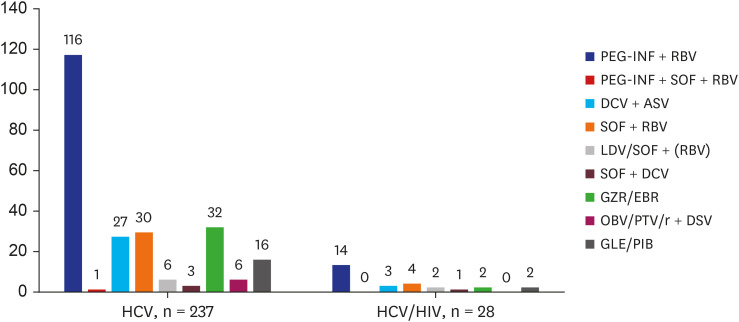

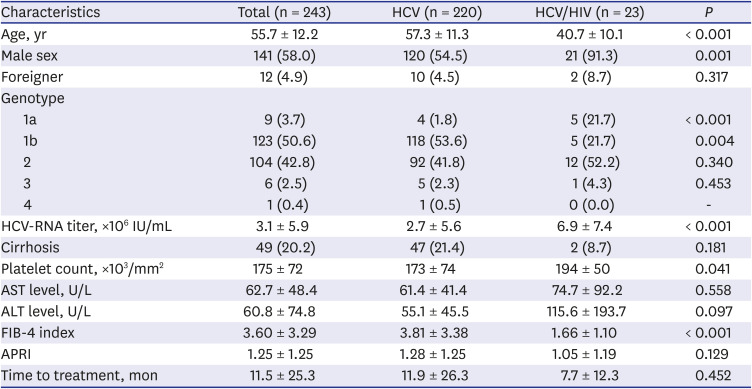
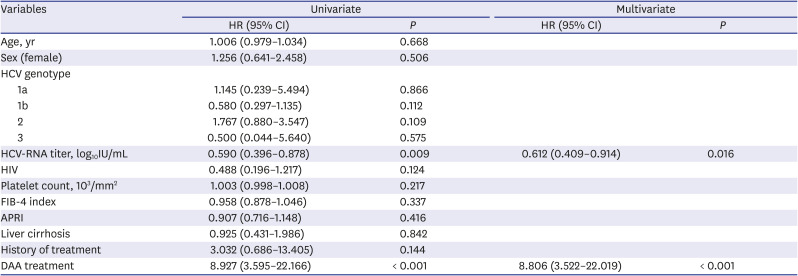





 PDF
PDF Citation
Citation Print
Print



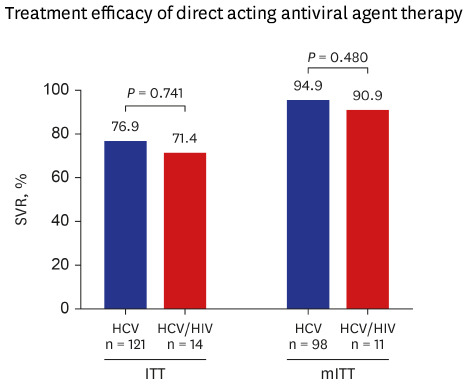
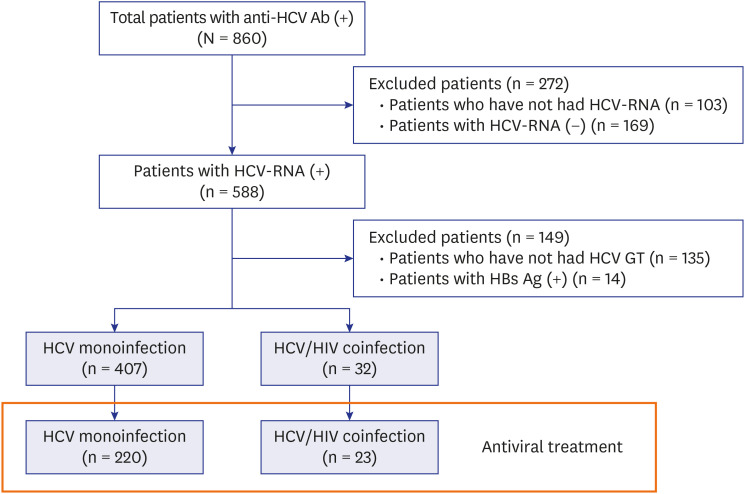
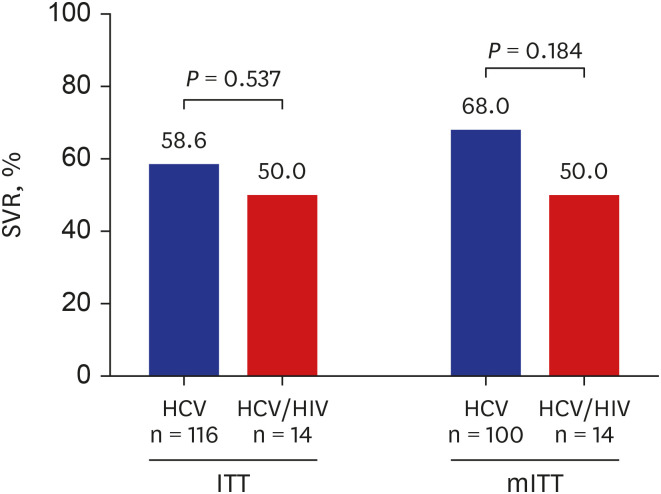
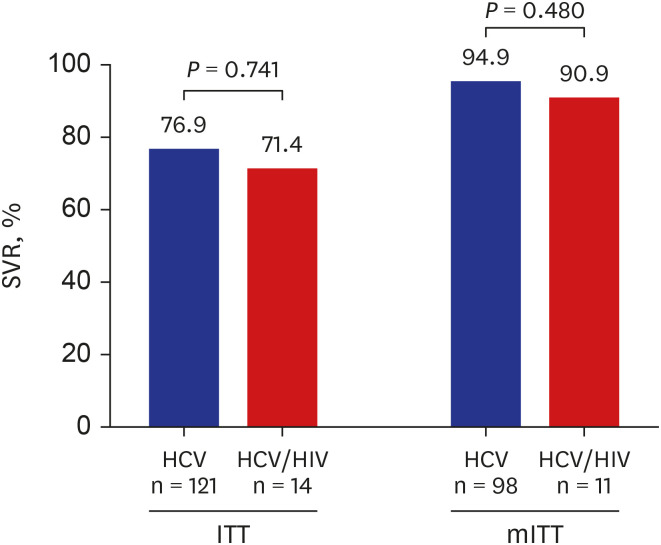
 XML Download
XML Download